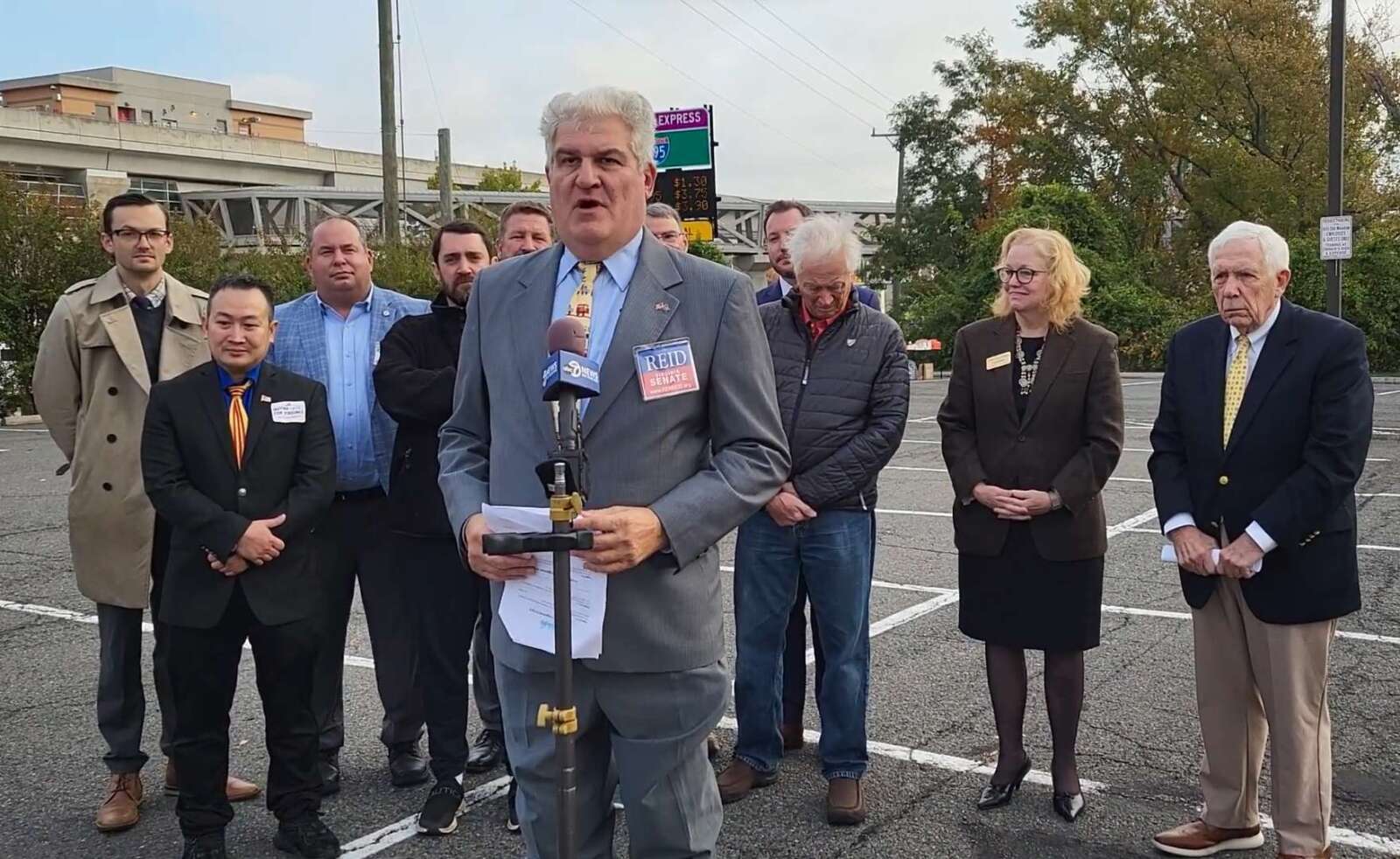
(Updated at 9:30 p.m. on 10/26/2023) Several Republicans campaigning to represent parts of Fairfax County in the General Assembly have vowed to change up Virginia’s interstate tolling system if they’re elected on Nov. 7.
With the McLean Metro station in Tysons as a backdrop, the candidates unveiled a “Tolling Equity and Relief Plan” last Friday (Oct. 20) that they argued would reduce congestion and lower the cost of using the Express Lanes on I-66 and the Capital Beltway (I-495).
Crafted by former Congressman Frank Wolf, who represented Virginia’s 10th district from 1981 to 2015, the proposal calls for frequent Express Lanes drivers to get rebates from toll and state tax revenues, lower high-occupancy vehicle requirements, and standardization of toll rates on I-66 inside and outside the Beltway.
“We are hearing many complaints about the high cost of the tolls — especially on the new I-66 express lanes but also I-495 and other toll roads, which is adding to the cost of living of Northern Virginia families,” said Ken Reid, who organized the press conference. “Government must do its part to give the region’s motorists a break.”
A former Loudoun County supervisor, Reid is vying for the State Senate District 37 seat against Saddam Azlan Salim, who won the Democratic primary in June over longtime Sen. Chap Peterson. The district includes Tysons, Vienna, Oakton, Merrifield and the cities of Fairfax and Falls Church.
Other candidates who endorsed the proposed legislation include:
- Mark Springman, competing for Senate District 34 against incumbent Scott Surovell
- Matt Lang, competing for Senate District 38 against Sen. Jennifer Boysko in a district reshaped by redistricting
- Kristin Lee Hoffman, competing for House District 6 against Del. Rip Sullivan
- Maxwell Fisher, competing for House District 8 against incumbent Irene Shin
- Nhan Huynh, competing for House District 9 against incumbent Karrie Delaney
- James Thomas, competing for House District 10 against incumbent Dan Helmer
- Ed McGovern, competing for House District 18 against Del. Kathy Tran
According to a press release from Reid’s campaign, the Tolling Equity and Relief plan would offer rebates to commuters who use the I-66 and/or I-495 Express Lanes more than 30 times a month, similar to a SunPass toll relief program that took effect in Florida this year.
The plan would also reinstate HOV-2 “at certain hours” on both interstates. Drivers were able to use the I-66 Express Lanes for free if they had at least two passengers until last December, when the Virginia Department of Transportation raised the requirement to HOV-3.
Per the press release, the plan would allocate toll revenue to widening I-66 to three lanes in each direction from the Dulles Access Road in Pimmit Hills to the Nash Street tunnel in Rosslyn.
“No funds would go to bike trails or other modes of transit until that project is done,” Reid’s campaign said.
Virginia currently uses I-66 and I-395/95 toll revenue for a Commuter Choice grant program that supports road and public transit improvement projects in those corridors. Recently funded projects include a north entrance for the McLean Metro station and Fairfax City’s first Capital Bikeshare stations. Read More
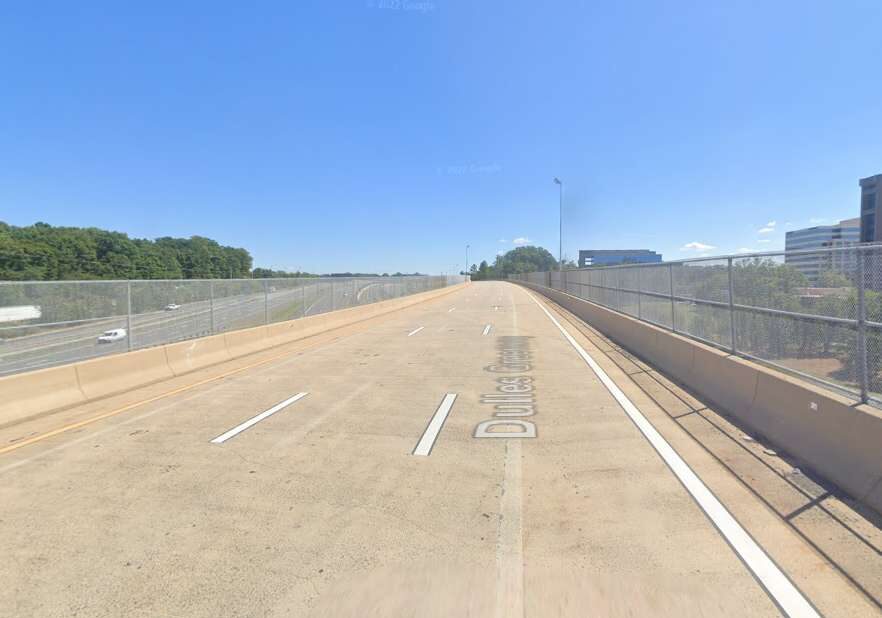
The Office of the Virginia Attorney General is opposing a private toll road owner’s request for a rate increase.
In July, Toll Road Investors Partnership II, the owner and operator of the 14-mile Dulles Greenway that runs between Leesburg and Washington Dulles International Airport, filed a request with the State Corporation Commission to increase tolls by at least 21%.
[On Sept. 29], Attorney General Jason Miyares said he objected to the request. [link added]
“Traffic in Northern Virginia is a daily challenge, and rising inflation only adds to the costs of commuting to work,” said Miyares in a statement. “My office stands alongside Virginia commuters who feel this struggle daily, advocating for fairness and resisting toll increases. Virginians deserve every hard-earned penny, and we’re here to protect Virginians from unreasonable financial burdens.”
TRIP II bases its pricing on the number of axles a driver’s vehicle has, with tolls for two-axle vehicles traveling from one end of the road to the other costing $5.25 during regular hours and $5.80 during rush hour. The proposed new rates for two-axle vehicles would be $6.40 during regular hours and $8.10 during rush hour.
The operator’s last rate increase request was denied in 2021. [FFXnow note: The Dulles Greenway operator’s latest request comes on the heels of the Metropolitan Washington Airports Authority increasing fees on the Dulles Toll Road for the first time in five years, starting this past Jan. 1.]
TRIP II said in its application that the increase will help it meet its financial obligations: “Only with the approval of the proposed tolls along with additional future increases will TRIP II be able to reach a place where it would have an opportunity to provide a reasonable return to its investors.”
Victoria LaCivita, a spokeswoman for Miyares, did not directly respond to whether the attorney general has any interest in lawmakers directing the state to enter into discussions with the toll operator to change how the roadway is managed.
However, she added, “Consumer protection is an important function of the Attorney General’s office. Northern Virginia residents and commuters have voiced strong opinions against the toll increase, and the Attorney General plans to represent that view in front of the State Corporation Commission.”
The proposed increases
TRIP II made the toll rate increase request after the failure this winter of legislation backed by the operator and Gov. Glenn Youngkin’s administration that would have let the state Commissioner of Highways, Secretary of Transportation and a steering committee negotiate new rates for the toll road. The proposal also included plans to reduce toll costs and implement distance-based tolling, which would charge drivers based on how far they travel.
Currently TRIP II is regulated by the State Corporation Commission under the Virginia Highway Corporation Act. That law allows the company to ask the SCC for a toll increase once per year but doesn’t permit it to negotiate those increases.
“TRIP II looks forward to continuing to work with the commonwealth to find a solution to how the Greenway is regulated to implement distance-based tolling,” said Renee Hamilton, chief executive officer for TRIP II, in a statement. “Drivers on other private toll roads in Northern Virginia pay based on the length of their trip. Drivers on the Greenway should be treated the same way. Filing a rate case application with the SCC was not our first choice.” Read More
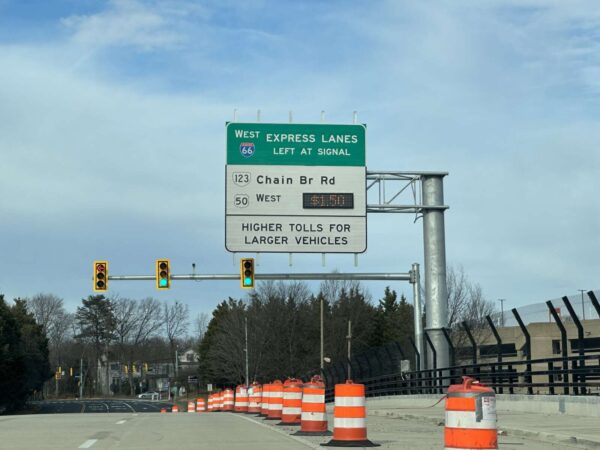
The toll lanes on I-66 outside the Capital Beltway have been open for over three months now, but some drivers are still getting tripped up by the accompanying signage.
The Fairfax County Board of Supervisors directed staff on Tuesday (March 7) to prepare a letter asking the Virginia Department of Transportation to clarify the information on its signs about toll prices and exit locations.
Springfield District Supervisor Pat Herrity, who requested the move, said his office has continued to receive complaints from confused constituents.
“The signage used on these newly opened Express Lanes is not as clear as the signs on I-495 and I-95 Express Lanes,” Herrity said. “The signage does not provide total cost information for the entire length, and it does not give clear information to drivers on locations of exit ramps to general purpose lanes, which is important for drivers deciding whether to pay additional tolls.”
Covering 22.5 miles from the Beltway (I-495) in Dunn Loring to Route 29 in Gainesville, the westward extension of the I-66 Express Lanes became fully operational on Nov. 22, though portions of the overall $3.7 billion project are still under construction.
The signage was developed in accordance with federal guidelines and approved by the Federal Highway Administration, but both VDOT and I-66 Express Mobility Partners (I-66 EMP), the private company that operates the toll lanes, acknowledged that this is “a learning period” as drivers adjust to new signs and traffic patterns.
“We are looking at areas in the corridor where we might enhance or clarify the signage in an effort to help drivers,” VDOT Northern Virginia’s megaprojects section said in a statement.
Because of their length, the new lanes are split up into three eastbound segments and four westbound segments, charging drivers for each segment they take. Signs for the lanes currently show only toll prices for specific sections, rather than the whole corridor.
Nancy Smith, the corporate affairs director for I-66 EMP, says the operator is “aware” that this approach “may present particular confusion” at spots like the I-495 interchange that are complicated to navigate, but it’s ultimately more effective.
“This system provides our drivers with the most accurate rates as well as greater flexibility to determine when to get on and off the lanes,” Smith said. “An end-to-end rate wouldn’t accurately reflect conditions in the furthest segment by the time a driver gets there. Again, it will take time for all drivers to completely familiarize themselves with our segmental tolling system.”
According to I-66 EMP, the average weekly toll lanes usage increased from about 3% to 5% of I-66 users over the past month, suggesting drivers becoming more accustomed to the lanes.
“That’s a very encouraging growth trend,” Smith said.
I-66 EMP has an online trip planning tool that provides toll estimates. Its customer service center at 1-833-643-2867 will also answer questions, Smith said.
Despite his concerns about the signage, Herrity called the I-66 Express Lanes project an “impressive feat” that provides new transportation choices and “a quicker commute due to the additional capacity from the toll lanes.”
“I thought a letter from the board might help VDOT encourage the contractor to get that signage done,” Herrity said.
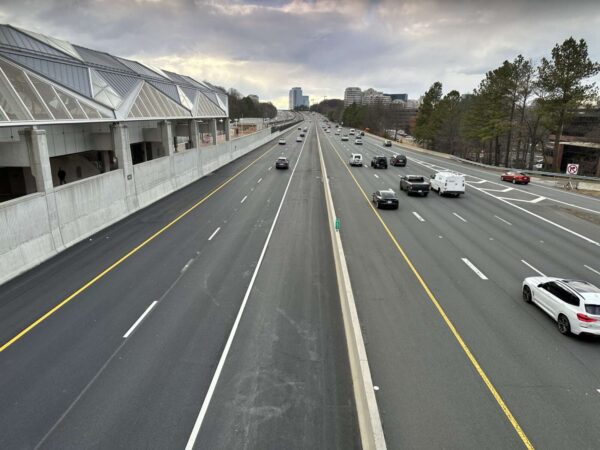
The days of saving up loose change to pay the Dulles Toll Road’s fees are officially in the past.
Effective today (Wednesday), the 14-mile highway also known as Route 237 has converted to an all-electronic, cashless payment system, joining the network of express lanes that criss-cross Northern Virginia.
“Eliminating cash toll collection is expected to speed traffic flow and benefit the environment by reducing emissions that would have been produced by vehicles waiting in toll-booth lines,” the Metropolitan Washington Airports Authority, which operates the road, said in a news release.
All coin baskets have now been deactivated.
The MWAA Board of Directors approved the plan to transition away from coin payments on Nov. 16. At that same meeting, the board also increased fees on the Dulles Toll Road for the first time in five years, a hike that took effect on Jan. 1.
Under the new system, payments can be made with an E-Z Pass or mobile apps. Drivers who don’t have an E-Z Pass transponder will be identified by their license plate and get an invoice mailed to them.
For those who “pay by plate,” two-axle vehicles will be charged $5.60 at the toll road’s main plaza and $3.60 on the ramps. That rate includes a $1.60 administrative fee that state law permits MWAA to collect “to recover the costs of pay-by-plate transactions.”
The fees can be paid online before or after an invoice arrives.
Fees are slightly lower for E-Z Pass users at $4 for the main plaza and $2 for the ramps, since they don’t have to pay the administrative fee.
According to MWAA, about 2% or 726,367 Dulles Toll Road transactions were paid by cash in 2022. The authority had already removed many toll booths to create E-Z Pass express lanes in 2019, and manual toll collections ceased in April 2020 due to the COVID-19 pandemic.
The Dulles Toll Road stretches from Route 28 by the Dulles International Airport in the west to the Capital Beltway near Tysons to the east.
Toll revenue goes toward the highway’s operating and maintenance costs, while also funding construction of Metro’s Silver Line, which launched service from Reston to Ashburn on Nov. 15.
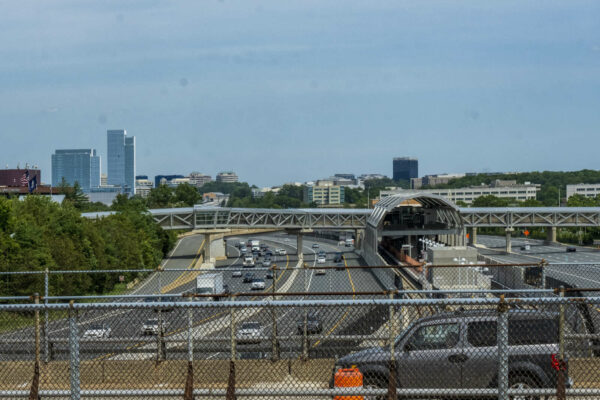
There are only a few days left before fee increases go into effect on the Dulles Toll Road.
Beginning Jan. 1, at the main line plaza, tolls will rise from $3.25 to $4 for two-axle vehicles, $6.50 to $8 for three-axle vehicles, $7.75 to $9.25 for four-axle vehicles, and $9 to $10.50 for five-axle vehicles.
The increase was approved by the Metropolitan Washington Airports Authority Board of Directors earlier this year. This is the first fee increase since 2019.
“Strategic debt management and refinancing efforts have kept toll rates lower than original projections through the years,” MWAA wrote in a statement.
The next toll increase will go into effect on 2028. Overall, hikes are expected every five years, according to MWAA. Increases are expected to continue through 2058.
At the ramps, tolls will increase from $1.25 to $2 for two-axle vehicles, $3 to $4 for three-axle vehicles, $3.50 to $4.50 for four-axle vehicles, and $4 to $5 for five-axle vehicles.
Toll booths will also be eliminated in the coming months, with the system switching to fully electronic payments.
Revenue from the tolls funds operating and maintenance costs, along with a portion of the construction costs for Silver Line. Service for the extension began in mid-November.
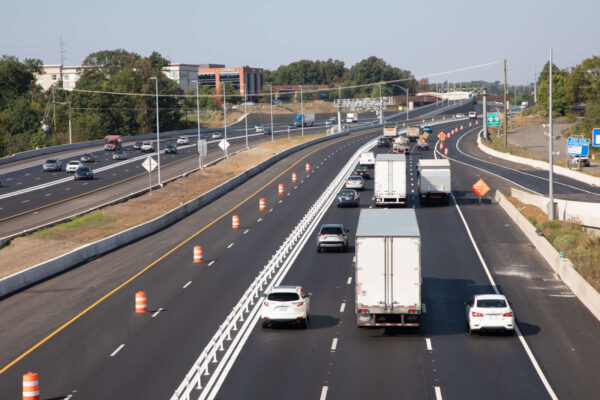
If you’re driving along the highways in Northern Virginia, do you usually hop into an express lane or do you prefer to tough it out in the normal lanes with the rest of the proletariat?
The Virginia Department of Transportation (VDOT) announced last week that the new I-66 Express Lanes running from the Beltway down to Centreville are set to fully open today (Tuesday).
“[VDOT and partners] announced today that the westbound direction of the new 66 Express Lanes from I-495 (Capital Beltway) to Route 28 in Centreville remains on schedule to open on or about this Saturday, Nov. 19,” VDOT said in a release. “The eastbound direction of this same 13-mile section of express lanes is expected to open by the end of November and could open as early as next Tuesday, Nov. 22, depending on weather and other factors.”
Along with the expansion, this month marks the 10-year anniversary of the express lanes opened on I-495. Since Express Lanes started being added to the highways around Northern Virginia, they’ve become largely ubiquitous along I-495, I-95 and I-395.
Intended to allow faster travel, the lanes charge vehicles based on demand, which can lead to eye-popping tolls. In two weeks, drivers will need to have at least two passengers to use the I-66 lanes for free, an increase from the current HOV-2 requirement.
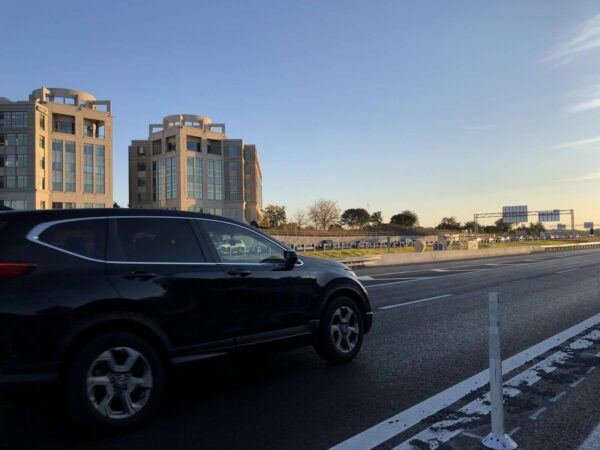
If you plan on driving the newly extended I-66 Express Lanes next month, make sure there are at least two other people in the car to avoid paying a toll.
The entire length of the I-66 toll lanes will shift from HOV2 to HOV3 in early December, the Virginia Department of Transportation (VDOT) recently announced.
Starting Dec. 5, only those with traveling with three or more people will be able to use the lanes for free. This is a change from the previous standard of two or more passengers.
Single riders or those traveling with just two passengers will have to pay a toll, with the price varying based on traffic volumes (known as “dynamic tolling”).
The change will apply to the entire 32-mile length of the I-66 Express Lanes, including the existing 9-mile section inside the Beltway (I-495) from Dunn Loring to Route 29 in Rosslyn. A new Beltway ramp to I-66 just opened this week.
That portion of I-66 operates as HOV on weekdays during peak hours and in peak directions. Otherwise, the express lanes are free and have no occupancy requirement.
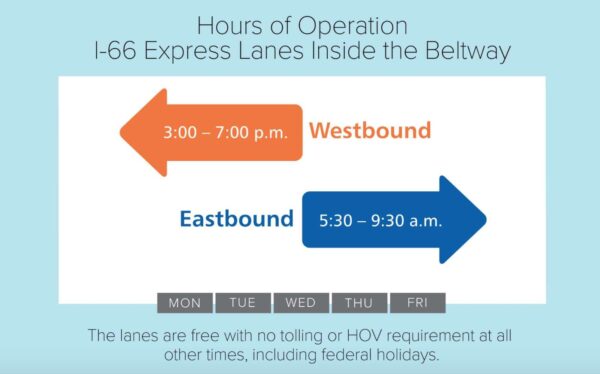
VDOT also notes that, in order to use the lanes during rush hour, drivers need an E-ZPass transponder.
The state transportation agency said in a press release that the new requirements are “consistent with HOV requirements on the other express lanes in Northern Virginia.”
In a statement to FFXnow, a VDOT spokesperson said consistency and federal environmental standards were the biggest reasons for the change:
This change supports the National Capital Region’s Transportation Planning Board’s policy to change HOV-2 to HOV-3 throughout the region in order to move more people with fewer vehicles and comply with the federal Clean Air Act Amendment. This change is also consistent with the other express lanes in Northern Virginia on I-95, I-395, and I-495, and is aligned with Virginia’s policy that HOV-3 be the requirement for toll-free travel on all privately-operated express lanes in Virginia. This rule applies to I-66 Express Lanes Outside the Beltway, which are operated by I-66 Express Mobility Partners under a public-private partnership with the Commonwealth.
The switch from HOV2 to HOV3 was first approved in 2016 by Virginia’s Commonwealth Transportation Board.
The portion of the express lanes inside the Beltway opened five years ago, accompanied by a good amount of griping about the high toll prices.
The 22-mile section outside of the Beltway is almost fully operational after about six years of work. A 9-mile stretch from Route 28 in Centreville to Route 29 in Gainesville opened in early September, and the westbound lanes from I-495 in Dunn Loring to Route 28 became operational yesterday.
The eastbound lanes could open as early as tomorrow, a few weeks ahead of schedule, VDOT says. Work in the corridor will continue through mid-2023 on other elements of the Transform 66 project, including new interchanges and a parallel shared-use path.
A version of this story appeared earlier on FFXnow’s sister site, ARLnow.

Drivers on the Dulles Toll Road can expect to pay higher tolls beginning next year.
The Metropolitan Washington Airports Authority’s Board of Directors voted yesterday morning to increase fees for users of the toll road — bringing tolls to $6 for the average driver.
The increase is expected to cover highway operations and maintenance costs, along with a dedicated set-aside for phase two of the Silver Line, which opened Tuesday (Nov. 15). The increase does not directly fund cost overruns associated with the project and has long been anticipated as part of a long-term funding plan.
At the main line plaza, tolls will rise from $3.25 to $4 for two-axle vehicles, $6.50 to $8 for three-axle vehicles, $7.75 to $9.25 for four-axle vehicles, and $9 to $10.50 for five-axle vehicles.
At the ramps, tolls will increase from $1.25 to $2 for two-axle vehicles, $3 to $4 for three-axle vehicles, $3.50 to $4.50 for four-axle vehicles, and $4 to $5 for five-axle vehicles.
The next toll increases is slated for 2028, according to MWAA’s board. “Modest” toll rate hikes are generally expected every five years, MWAA wrote in a statement.
MWAA also plans to collect a $1.60 administrative fee to process tolls for drivers who do not pay with the EZPass. The move comes as the toll road makes a shift to all electronic collections next year.
MWAA plans to eliminate toll boots at existing toll lanes in the coming months.
“Eliminating toll booths is expected to speed traffic flow and benefit the environment by reducing emissions that would have been produced by vehicles waiting in toll-booth lines,” MWAA wrote in a statement.
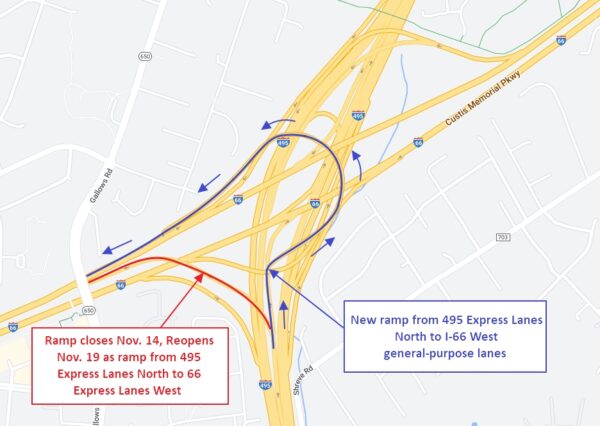
Updated at 3:25 p.m. — The switch to the new I-495 North ramp to I-66 is now scheduled to be implemented tomorrow night and will be in place early Wednesday morning (Nov. 16), VDOT says.
Earlier: The Capital Beltway is getting a new ramp in Dunn Loring, as the Virginia Department of Transportation prepares to open another segment of the extended I-66 Express Lanes.
A new, permanent ramp and exit from the northbound I-495 Express Lanes to the general purpose lanes on I-66 West was scheduled to open this morning, VDOT announced Friday (Nov. 11).
The ramp is located on the right side of the Beltway, about 500 feet north of the existing ramp, and loops around the interchange.
The existing ramp closed today but will reopen on or around Saturday (Nov. 19) as the new connection from the 495 North Express Lanes to the new 66 Express Lanes West, according to VDOT, though the exact date could vary depending on the weather.
The department announced last week that the westbound I-66 toll lanes from I-495 to Route 28 in Centreville will open to traffic this Saturday, with the eastbound lanes following by the end of November.
The Transform 66 Outside the Beltway project has been in the works since 2016, adding 22 miles to the I-66 toll lanes while reconfiguring interchanges and creating a shared-use trail in the corridor. A 9-mile stretch of lanes opened between Gainesville and Centreville in September.
Starting Dec. 5, the entire I-66 Express Lanes system will require vehicles to have three or more occupants to qualify as high-occupancy so they can use the lanes toll-free.
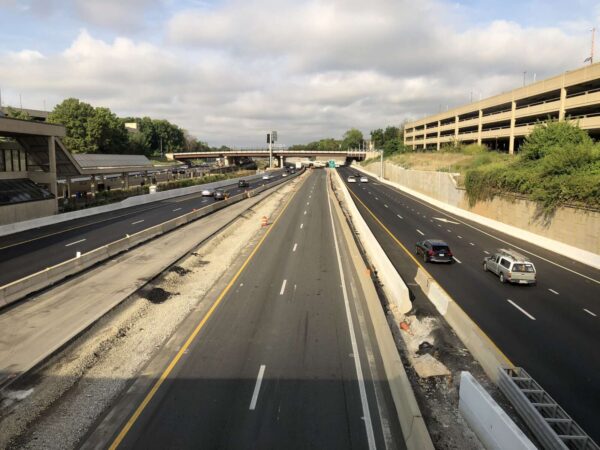
The extended I-66 Express Lanes outside the Capital Beltway will open ahead of schedule, the Virginia Department of Transportation says.
Previously scheduled to arrive in December, the lanes will open in the westbound direction from I-495 in Dunn Loring to Route 28 in Centreville as soon as Saturday, Nov. 19, VDOT said in a news release snuck in just before a three-day weekend.
The eastbound lanes along that 13-mile stretch of road are expected to open by the end of November.
“Updates will be provided to the public as final construction progresses. All work is weather dependent, and inclement conditions could affect the final opening schedule,” VDOT noted.
Construction to extend the I-66 toll lanes 22 miles outside the Beltway has been underway since summer 2016. Toll lanes opened inside the Beltway in December 2017.
Nine miles of express lanes west of Centreville opened in early September, also coming sooner than anticipated. Tolling on that section, which extends to Gainesville, began on Sept. 24.
As with the existing express lanes around Northern Virginia, the new I-66 lanes will charge tolls that vary based on traffic volumes and speed. Vehicles that meet the high occupancy requirements can use the lanes for free, but they need to have an E-ZPass Flex set to “HOV On.”
The I-66 Express Lanes currently have an HOV requirement of two or more occupants, but that will increase to three or more occupants along the entire corridor, starting Dec. 5, according to VDOT, which says the new rule will be consistent with other toll lanes in the region.
Here’s more from VDOT on how drivers can prepare for the express lane openings:
Obtain an E-ZPass to pay tolls, or an E-ZPass Flex to travel toll-free as HOV. Drivers can obtain an E-ZPass at ezpassva.com, by calling 877-762-7824, or in person at many Giant and Wegmans grocery stores in Northern Virginia, as well as at AAA offices, Fairfax Connector stores, and DMV Customer Service Centers.
Become familiar with other payment options available through I-66 EMP such as paying online, via the mail, by calling 833-643-2867, or in person at the 66 Express Lanes Customer Service Center in Manassas. Payment options other than E-ZPass will incur administrative fees. More information can be found at Ride66express.com.
More information about the I-66 Express Lanes can be found at Ride66express.com.
Though the express lanes will open to traffic soon, work on some interchanges and a shared-use trail alongside the highway will continue. The overall project is scheduled for completion by mid-2023.

